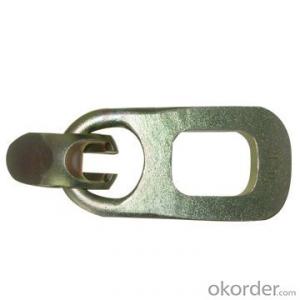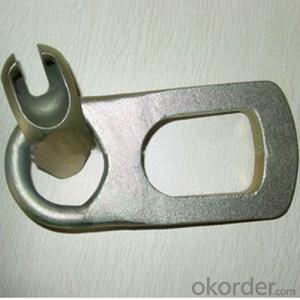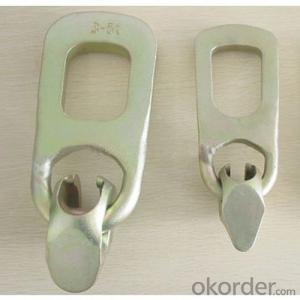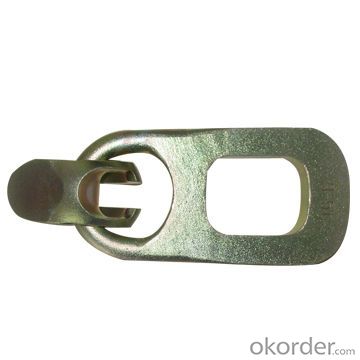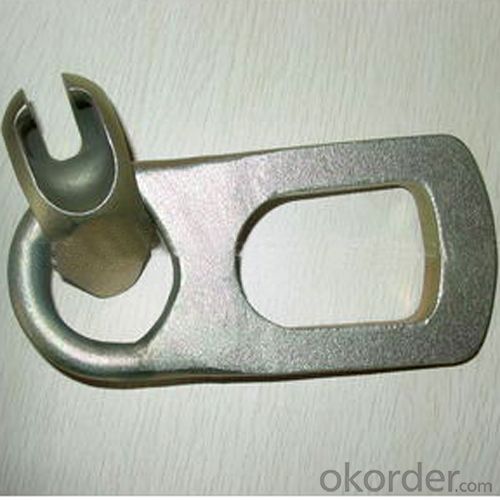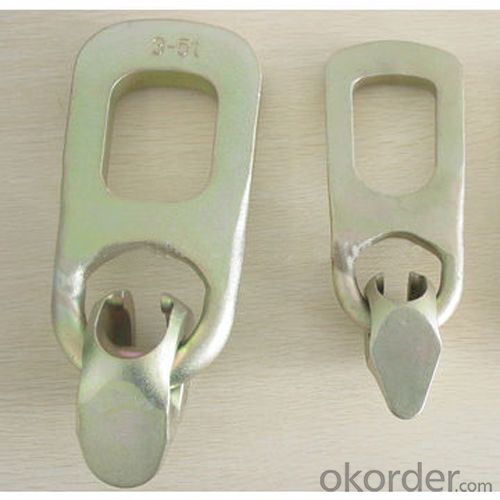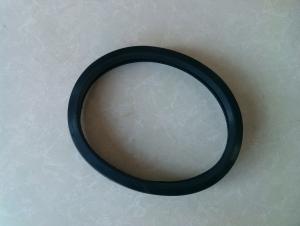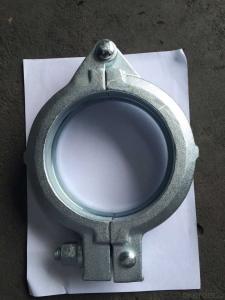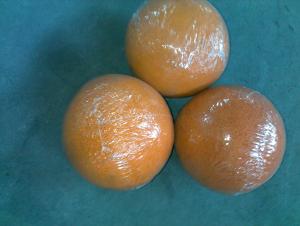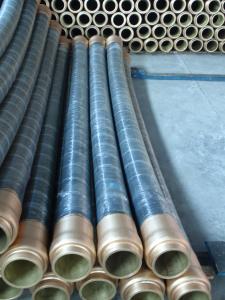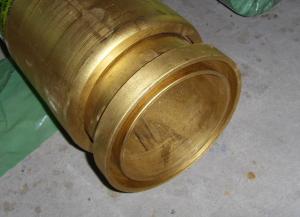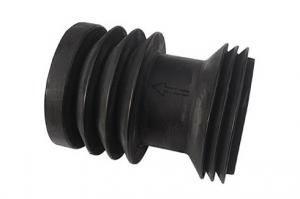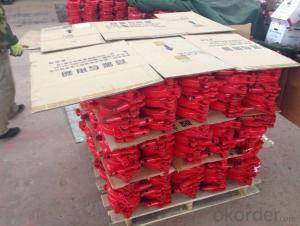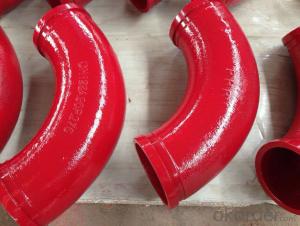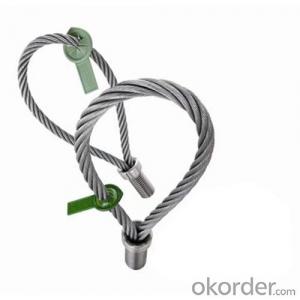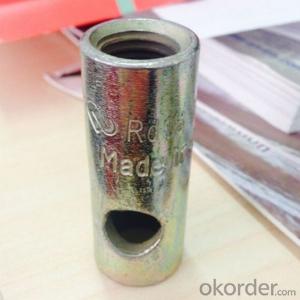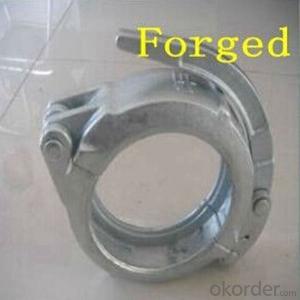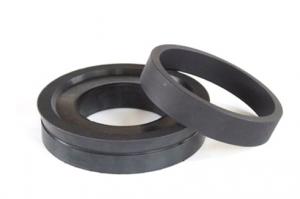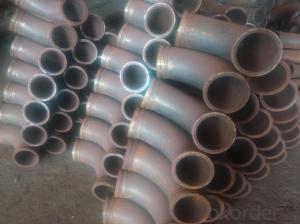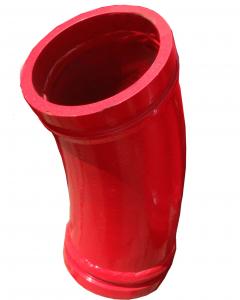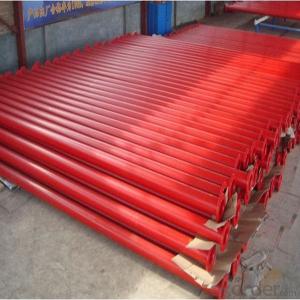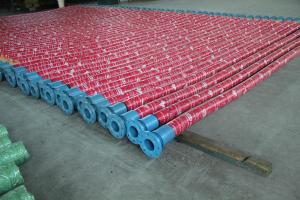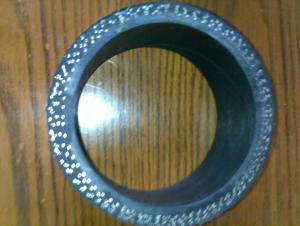Forged Concrete Ring Lifting Clutch with Hot-Dip Galvanized
- Loading Port:
- Tianjin
- Payment Terms:
- TT OR LC
- Min Order Qty:
- 100 pc
- Supply Capability:
- 10000 pc/month
OKorder Service Pledge
OKorder Financial Service
You Might Also Like
1. Materials: steel, hi tensile alloy steel, alloy steel, 20Mn2
2. Specification:
P-52 SL anchor
P-53 SL eye anchor
T - anchor
Eye anchor
3. Axial capacities load: 1.3T, 2.5T (2T), 5.0T (4T), 10.0T (8T), 20.0T, 32.0T
4. Primary competitive advantages:
1. More than 10 years focus on building material manufacturing
2. Prompt delivery time within 25 days after confirming order
3. Eathu's products are enhanced by the QA and quality control checks during the production, if necessary each order can be send out with a certificate referring back to test.
4. Precast concrete elements may be lifted several times after casting and during storage and erection-by using this system, the designer and the worker manager ensure that each lift is carried out safely and quickly.
5.Packaging and delivery:
Packaging details: goods packed in cartons and then on the pallet
Delivery detail: within 25 days after getting payment
· Experienced Staff
· Form A
· Guarantee/Warranty
· Packaging
· Price
· Product Features
· Product Performance
· Prompt Delivery
· Quality Approvals
· Reputation
· Service
· Small Orders Accepted
· More than 10 Years Experience
· Testing before shipping
Market:
Asia
Australasia
Central/South America
Mid East/Africa
North America
Western Europe
FAQ:
Q1: How long about delivery time Concrete Lifting Insert ?
A1: The delivery time will be very short, normally we keep the raw materials for old customers and sometime we also keep stock products to
make sure delivery time in any emergency cases.
Q2: How do we guarantee the quality of our Concrete lifting Insert ?
A2: We have established an advanced quality management system which conducts strict quality tests at every step, from raw materials to the final product. At the same time, we provide extensive follow-up service assurances as required.
Q3: How soon can we receive the product after purchase?
A3: Within three days of placing an order, we will book the vessel for goods. The specific shipping date is dependent upon international and government factors, but is typically 7 to 30 workdays.
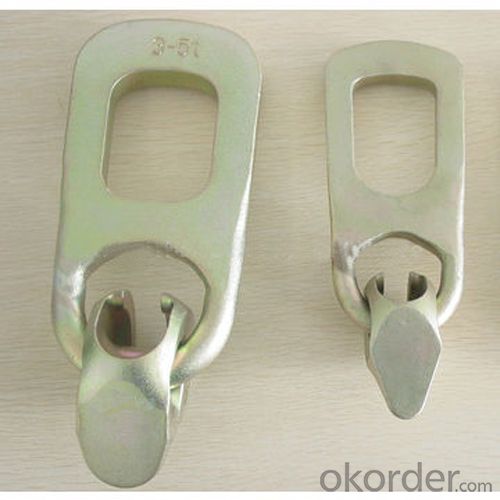
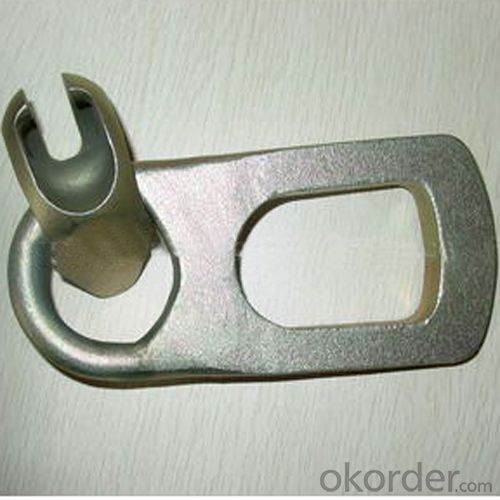
- Q: How do I properly maintain and replace hydraulic hoses in concrete pump spare parts?
- Proper maintenance and replacement of hydraulic hoses in concrete pump spare parts is crucial to ensure the smooth functioning and longevity of your equipment. Here are some steps you can follow to maintain and replace hydraulic hoses effectively: 1. Regular Inspection: Conduct regular visual inspections of the hoses to identify any signs of wear, damage, or leaks. Look for bulges, cracks, abrasions, or fraying at the ends of the hoses. Pay attention to fittings, connections, and bends in the hose as these areas are prone to damage. 2. Preventative Maintenance: Implement a preventive maintenance schedule to reduce the chances of unexpected hose failure. This includes cleaning the hoses regularly to remove dirt, debris, and concrete residues that may cause abrasion or clogging. Use a mild detergent and water to clean the hoses, and ensure they are thoroughly dried before use. 3. Proper Storage: When not in use, store hydraulic hoses in a clean, dry, and temperature-controlled environment. Protect them from direct sunlight, extreme temperatures, and chemicals, as these factors can degrade the hoses over time. 4. Correct Handling: Always handle hydraulic hoses with care to prevent damage. Avoid dragging them on rough surfaces or sharp edges that can cause cuts or abrasions. Do not allow the hoses to kink or twist excessively, as this can weaken the internal structure. 5. Timely Replacement: Replace hydraulic hoses as soon as you notice signs of wear, damage, or leaks. Do not wait for hose failure, as it can lead to costly downtime and potential safety hazards. Follow the manufacturer's recommendations for the replacement interval, which may vary based on the type of hose and its usage. 6. Use Quality Replacement Hoses: When replacing hydraulic hoses, ensure that you use high-quality hoses that are compatible with your concrete pump. Choose hoses that meet industry standards and specifications, as they are designed to withstand the demanding conditions of concrete pumping. 7. Proper Installation: Properly install the replacement hoses, ensuring that they are correctly routed and securely connected to the fittings. Use appropriate tools and techniques to tighten the fittings, avoiding over-tightening that can damage the hose or fittings. 8. Regular Training: Provide regular training to your staff on proper maintenance, inspection, and replacement procedures for hydraulic hoses. This will enhance their knowledge and skills, reducing the risks of improper handling or installation. By following these steps, you can effectively maintain and replace hydraulic hoses in concrete pump spare parts, ensuring the safety and efficiency of your equipment. Remember to consult the manufacturer's guidelines and seek professional assistance whenever necessary.
- Q: Can I get spare parts for both concrete pumps with and without remote control systems?
- Yes, it is possible to get spare parts for both concrete pumps with and without remote control systems. Many manufacturers and suppliers of construction equipment offer spare parts for various models and types of concrete pumps. Whether your pump has a remote control system or not, you can typically find replacement parts such as valves, cylinders, hoses, pistons, and other components from reputable suppliers. It is important to ensure that you provide the correct specifications and model details when ordering spare parts to ensure compatibility with your specific concrete pump.
- Q: How can you determine when a concrete pump hose needs to be replaced?
- There are a few signs that can indicate when a concrete pump hose needs to be replaced. Firstly, if there are any visible cracks or tears on the hose, it is a definite indication that it needs to be replaced. Additionally, if you notice any leaks or excessive wear and tear on the hose, it may be time for a replacement. Regular inspections and maintenance can help identify any signs of damage or deterioration, ensuring the safety and efficiency of the concrete pump.
- Q: How does a concrete pump S valve function?
- A concrete pump S valve functions by controlling the flow of concrete from the hopper to the discharge outlet. The S valve is a crucial component in the concrete pumping system as it allows for the precise and efficient delivery of concrete to the desired location. The S valve consists of two separate valves, one on each side, that are connected by a central shaft. These valves are shaped like an "S", hence the name. Each valve has a concrete outlet and a hydraulic cylinder that controls its movement. When the concrete pump is activated, the hydraulic system applies pressure to the cylinders, causing them to push the valves open. As the valves open, concrete is allowed to flow from the hopper into the pump's cylinder. Once the concrete is inside the cylinder, the hydraulic system reverses the pressure on the cylinders, causing them to retract. This movement pulls the valves closed, sealing off the cylinder and preventing any backflow of concrete. As the cylinder retracts, it also pushes the concrete inside towards the discharge outlet. The pressure created by the retraction of the cylinder forces the concrete through the outlet pipe, which leads to the desired location for pouring. The S valve's design allows for a smooth and continuous flow of concrete, without any interruption or blockages. It also provides a high level of control over the concrete placement, allowing operators to adjust the flow rate and direction as needed. Overall, the concrete pump S valve is responsible for regulating the flow of concrete, ensuring its efficient and precise delivery to the desired location. Its reliable and effective functioning is vital for successful concrete pumping operations.
- Q: What is the washing process of the concrete pump pipe?
- Take some concrete out of the first straight pipe, squeeze it into a saturated sponge ball, and fill a sponge ball with a cement bag soaked in water. The paper also works well
- Q: How much is the pump for a month?
- Remove the pump car monthly fuel maintenance consumption (about 10 thousand to 5000), calculate the monthly one of the clay, probably earn about 14 to 150 thousand net!
- Q: How often should hopper agitator shaft bearings be inspected or replaced in a concrete pump?
- The hopper agitator shaft bearings in a concrete pump should be inspected regularly, at least once every six months, to ensure proper functioning. However, the exact frequency of replacement would depend on the manufacturer's recommendations, the intensity of usage, and the condition of the bearings. It is crucial to monitor the bearings for any signs of wear, damage, or excessive vibration, as this can lead to equipment failure and potential safety hazards.
- Q: Can I get spare parts for concrete pumps with different types of valve systems, such as S-valve or gate valve?
- Yes, it is possible to get spare parts for concrete pumps with different types of valve systems, such as S-valve or gate valve. Concrete pump manufacturers and suppliers usually offer a wide range of spare parts for their equipment, including valves. These spare parts can be ordered directly from the manufacturer or through authorized distributors. It is important to provide specific information about the concrete pump model, valve type, and any other relevant details when ordering spare parts to ensure compatibility. Additionally, there are specialized companies that focus on supplying spare parts for concrete pumps, regardless of the valve system type. These companies often have a comprehensive inventory of spare parts and can assist in identifying and sourcing the required parts for your specific concrete pump.
- Q: What are the potential risks associated with the installation and replacement of concrete pump spare parts?
- There are several potential risks associated with the installation and replacement of concrete pump spare parts. One of the main risks is the possibility of improper installation. If the spare parts are not installed correctly, it can lead to issues such as leaks, decreased performance, and even equipment failure. This can not only result in costly repairs but also pose a safety hazard to workers and those in the surrounding area. Another potential risk is the use of counterfeit or low-quality spare parts. These parts may not meet the necessary standards and specifications, which can compromise the integrity and functionality of the concrete pump. This can also increase the risk of equipment failure and accidents. Additionally, the installation and replacement process may require workers to operate heavy machinery, such as cranes or forklifts, which can be hazardous if not done properly. There is a risk of accidents, injuries, or damage to the equipment or surrounding structures if adequate precautions are not taken. Furthermore, concrete pump spare parts may contain hazardous materials or substances. Workers need to be aware of the potential risks associated with handling and disposing of these materials, such as exposure to harmful chemicals or environmental contamination. Lastly, there is a risk of delays and downtime during the installation and replacement process. If spare parts are not readily available or if there are issues with their compatibility, it can result in extended periods of equipment inoperability. This can lead to project delays, increased costs, and potential financial losses. To mitigate these risks, it is important to ensure proper training and supervision of workers involved in the installation and replacement of concrete pump spare parts. Using genuine and high-quality spare parts from reputable suppliers can also reduce the risk of equipment failure. Regular inspections, maintenance, and adherence to safety protocols are crucial to minimize the potential risks associated with this process.
- Q: How often should hopper grate handles be inspected or replaced in a concrete pump?
- Hopper grate handles in a concrete pump should be inspected regularly for any signs of wear and tear or damage. The frequency of inspection and replacement may vary depending on the usage and condition of the equipment. It is recommended to inspect the hopper grate handles at least once a month or after every 500 hours of operation, whichever comes first. During the inspection, ensure that the handles are securely attached to the hopper grate and check for any cracks, bends, or other structural issues. If any damage is detected, it is advisable to replace the handles immediately to prevent any accidents or further damage to the equipment. It is also important to follow the manufacturer's guidelines and recommendations for maintenance and replacement of hopper grate handles. By regularly inspecting and replacing the handles as needed, you can ensure the safe and efficient operation of the concrete pump.
Send your message to us
Forged Concrete Ring Lifting Clutch with Hot-Dip Galvanized
- Loading Port:
- Tianjin
- Payment Terms:
- TT OR LC
- Min Order Qty:
- 100 pc
- Supply Capability:
- 10000 pc/month
OKorder Service Pledge
OKorder Financial Service
Similar products
Hot products
Hot Searches
Related keywords
